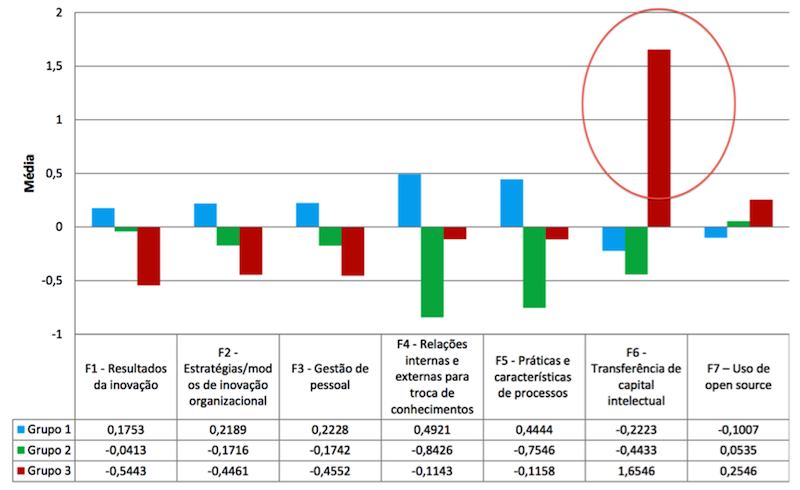If I asked you to name a segment where, without a doubt, innovation dominates and always generates gains, which one would you say it is? I believe that the Software segment would be cited as one of the first, if not the first, because in few areas has there been as much innovation in the last ten years as this one.
But what if I said that just over half of the software companies in Brazil manage to obtain any significant result from innovation, would that be surprising? In truth no. As I always say, innovation is not just inspiration and creativity. Innovation is an activity that depends on a set of processes just like any other.
And to prove this, just out of the oven (published on August 3, 2013) a survey on “Open Innovation in the Software Industry”, led by Professor Dr. Paulo Henrique S. Bermejo, from the Federal University of Lavras. You can download the survey on here.
What this research with 596 companies of different sizes clearly demonstrates is that the companies that are most able to achieve results with innovation are those that have high rates of:
- Strategies for organizational innovation
- People management
- Communication
- Practices and characteristics of processes focused on innovation
Myth No. 1 – Detonated!: you know that “let's buy an innovative company or technology to boost our results with innovation”? Yeah… In general, this doesn't work. The biggest point outside the curve that we observed in the research is precisely this. The companies with the worst performance in terms of innovation are the ones that most practice the transfer of intellectual capital (circled in the graphic image).

This effect is easy to understand: we often see small, ingenious companies in the market being bought by larger companies. But after all, why was the acquired company brilliant and innovative? Why were there great people? Yes, but I guarantee: genius people exist all over the place, but they are usually erased by antiquated processes and structures. And once the buying company's management model is propagated to the newly acquired genius company, the genius quickly dissipates amidst the policies, rules, procedures, organizational charts, and approvals from the various levels of good old-fashioned bullshit corporate.
Myth No. 2 – Detonated!: Open source systems, or Open Source, leverage innovation.
A detail that drew a lot of attention in the research is that companies with better levels of innovation are those that have a lower level of use of Open Source technologies, the opposite being true: the lower the level of results with innovation, the more the company uses Open Source. So, another myth totally debunked.
I never particularly thought that Open Source would save humanity. I always saw this front as just “one more option”, but never as the only or the main one. Other surveys such as ABES, show that only 4% of Software GDP in Brazil is driven by Open Source. And as always the communes of the government betting on the wrong horse…
So here we go, lessons learned:
1 – If you intend to buy an innovative company or technology to boost your old company, treat it as a separate unit within the organization, which is not subject to the same rules as the rest.
2 – If you want innovation to happen, study and implement processes that make creative ideas gain focus and be valued. If you want some tips, check out my article on how to create an org chart that helps innovation.
3 – There's nothing wrong with adopting Open Source solutions, but don't pin your hopes for innovation on them. Most can, at most, create shortcuts to reach some more solid solution.
Marcelo Lombardo is founder of NWG and creator of Omie













